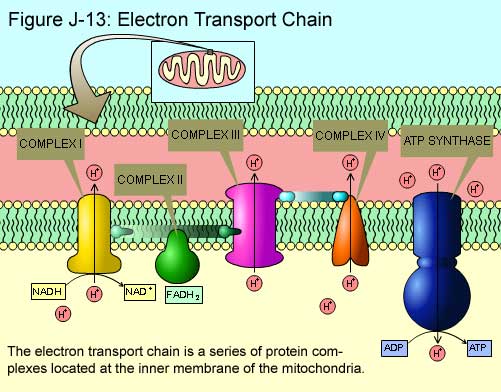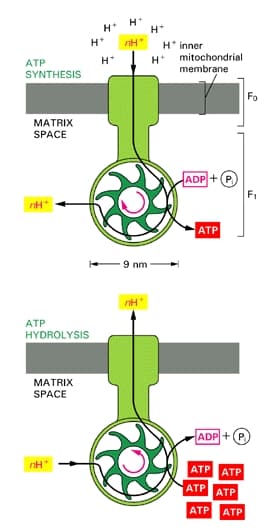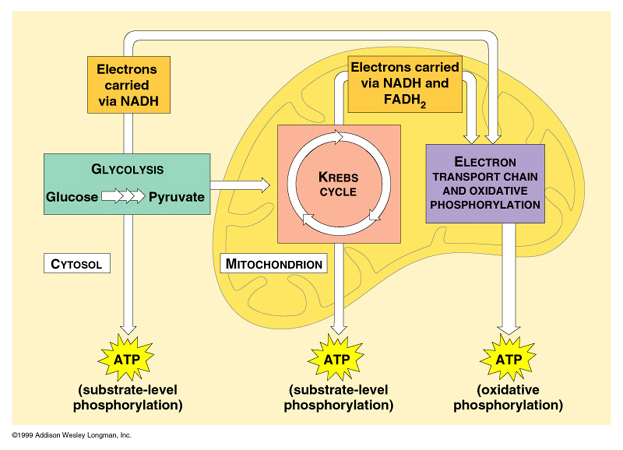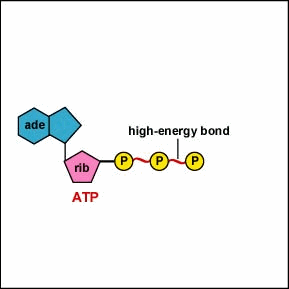Maybe it's easy for some of you because all we talked about is just the fate of carbohydrate that eventually becomes ATP, energy, or fat. But not all could remember the biochemical process of each product (unless if you're a nutritionist).
*********************************************************
In animals, the most important carbohydrate is glucose; so much so, that the level of glucose is used as the main control for the central metabolic hormone, insulin. Starch, and cellulose in a few organisms (e.g., termites, ruminants, and some bacteria), both being glucose polymers, are disassembled during digestion and absorbed as glucose. Some simple carbohydrates have their own enzymatic oxidation pathways, as do only a few of the more complex carbohydrates. The disaccharide lactose, for instance, requires the enzyme lactase to be broken into its monosaccharides components; many animals lack this enzyme in adulthood.
So here what's happen..
After the carbohydrate (CHO) are ingested by animals (or human), the polysaccharide chain of carbohydarte will be split into monoscharide form (glucose, fructose, galactose) by the action of pancreatic enzymes (pancreatic amylase) in the duodenum and this is only occur to all animals except ruminants (due to the lack of amylase instead of cellulase enzyme produced by bacteria during rumen fermentation) and glucose will be transported to the liver via blood. In the liver, they are stored as GLYCOGEN for later use. The glycogens are also stored in the muscle for rapid use. Whenever the body needs energy (ATP), the glycogens are split into glucose by the process of glycogenolysis.
Next, the glucose will enter cytoplasm of the cell to undergo GLYCOLYSIS, as the first part of CHO metabolism.
Glycolysis takes place in the cytoplasm and can occur without the presence of oxygen and is the primary energy source for most organisms. This process consumes two ATP molecules, and produces four ATP molecules and two NADH2+ molecules.
|
Glycolysis
1.Glucose 6-phosphate is formed when the 6th carbon on the glucose molecule is phosphorylated by an ATP molecule.

Phosphorilation (2ATP used-1 glucose molecule)
2.Glucose 6-phosphate is converted into a 5-carbon ring isomer, fructose 6-phosphate.

Isomerization

Phospholyration catalysed by pho(2ATP used)
4. Fructose 1, 6-diphosphate is processed by an enzyme into two glyceraldehyde 3-phosphate molecules.

5.Isomerization of dihydroxyacetone phosphate catalysed by Triose phosphate isomerase:

Dihydroxyacetone phosphate <=> D-glyceroaldehyde-3-phosphate
6. Two molecules of glyceraldehyde 3-phosphate are oxidized, losing hydrogen atoms and gaining phosphate groups to form1, 3-diphosphoglycerate. Two molecules of NAD+ are converted into NADH2+ in the process.

7. Two 1,3-diphosphoglycerate molecules phosphorylate ADP (adenine diphosphate) to yield two molecules of 3-phosphoglycerate and two ATPs are produced.

8. The phosphate groups on 3-phosphoglycerate move to the 2nd carbon, forming 2-phosphoglycerate.

9. The two 2-phosphoglycerate molecules are dehydrated and forms two high-energy phosphoenolpyruvate molecules.

10. The two phospoenolpyruvate phosphorylates two ADPs and produces two more ATPs & two molecules of pyruvate

Net ATP produce per glucose: 4ATP + 2NADH (later converted into ATP)
Net ATP used per glucose: 4ATP
Overview Glycolysis

Next, if enough oxygen supply, the pyruvates are sent to the mitochonria to be converted to more readily form to energy. This process is called aerobic respiration (Kreb cycle or citric acid cycle). If oxygen is not sufficient, the pyruvate will be converted to lactic acid. This process is called lactid acid fermentation.
Kreb Cycle
Prior to entering the Krebs Cycle, pyruvate must be converted into acetyl CoA (pronounced: acetyl coenzyme A). This is achieved by removing a CO2 molecule from pyruvate and then removing an electron to reduce an NAD+ into NADH. An enzyme called coenzyme A is combined with the remaining acetyl to make acetyl CoA which is then fed into the Krebs Cycle. The steps in the Krebs Cycle are summarized below:

1.Citrate is formed when the acetyl group from acetyl CoA combines with oxaloacetate from the previous Krebs cycle.
2.Citrate is converted into its isomer isocitrate
3.Isocitrate is oxidized to form the 5-carbon α-ketoglutarate. This step releases one molecule of CO2 and reduces NAD+ to NADH2+.
4.The α-ketoglutarate is oxidized to succinyl CoA, yielding CO2 and NADH2+.
5.Succinyl CoA releases coenzyme A and phosphorylates ADP into ATP.
6.Succinate is oxidized to fumarate, converting FAD to FADH2.
7.Fumarate is hydrolized to form malate.
8.Malate is oxidized to oxaloacetate, reducing NAD+ to NADH2+.
9. The cycle is repeated.Because glycolysis produces two pyruvate molecules from one glucose, each glucose is processes through the kreb cycle twice.
For each molecule of glucose, Kreb cycle produces;
6 NADH2+,
2 FADH2,
2 ATP.
Opss...is that it? only little ATP from the previous processes?? (kreb cycle and glycolysis) but the muscle needs more energy to sustain life!! How about NADH2+ and FADH2??
Now, we have come to the third and final process of making ATP which can use directly by the cell. This process is called Electron Transport Chain which transported electron carriers NADH2+ and FADH2 for more ATPs.The molecules have been reduced, receiving high energy electrons from the pyruvic acid molecules that were dismantled in the Krebs Cycle. Therefore, they represent energy available to do work. These carrier molecules transport the high energy electrons and their accompanying hydrogen protons from the Krebs Cycle to the electron transport chain in the inner mitochondrial membrane.
Electron Transport Chain

The electron transport chain occurs at the inner membrane of the mitochondria
The steps ETC are as below;
2. The high energy electrons are transferred to ubiquinone (Q) and cytochrome c molecules, the electron carriers within the membrane. The electrons are then passed from molecule to molecule in the inner membrane of the mitochondron, losing some of their energy (H+ ions) to the intermembrane at each step.
3. The final transfer involves the combining of electrons and H2 atoms with oxygen to form water. The molecules that take part in the transport of these electrons are referred to as the electron transport chain.
How does it contributed to ATP? Let's look how it does
Chemiosmosis and ATP synthesis
The intermembrane space is impermeable to H+ ions. Pumping H+ ions out of the matrix and into them intermembrane space creates an electrochemical gradient. Electron free energy is transferred to potential energy in the electrochemical gradient. This causes higher positive charge [H+ ions] in the intermembrane space than in the matrix and higher concentration of H+ ions in the intermembrane space than in the matrix.
The proton motive force is created by (H+ ion) to repel one another and need to diffuse back into the inner membrane of mitochondria due to low (H+ ions) concentration. This causes H+ ions to move around in the intermembrane space. Since it is unable to move through the inner membrane, H+ ions are forced to move through special protein channels called ATP synthase. The term chemiosmosis is used due tothe free energy of the electrochemical gradient drives the synthesis of ATP from ADP and Pi in the matrix.

In summary, for 1 NADH molecule will produce 3 ATP, due to the 3 times electron transport and for 1 FADH molecule will produce 2 ATP (2 times electron transport).
Net ATP yield for 1 glucose molecule
From Glycolysis: 8ATP
** total ATP produced is 10 but minus 2ATP's used in the phosphorylation of glucose to fructose-6-phosphate.
Net ATP yield for each pyruvate
From 1 GDP (From kreb cycle) = 1 ATP X 2 pyruvates = 2 ATP
From ETC NADH: 3ATP x 4 (from kreb cycle) = 12 ATP x 2 pyruvates = 24 ATP
FADH: 2ATP X 1 (from kreb cycle) = 2 ATP x 2 pyruvates = 4 ATP
Total ATPs produced per 1 glucose: 38 ATP
** The liver and cardiac cells as well as many other cell produce 38 ATP molecules from the complete oxidation of 1 glucose molecule
**However, muscle cells and neurones produce only 36 ATP molecules for each glucose molecules because in these cells. 2 molecules of NADH+H produced in glycolysis cannot enter ETC directly (need shuttle)

Summary of glucose metabolism
How does the ATP works?

Sources: Glycolysis.co.uk, cellular respiration; oracle thinkquest.org, energy flow in living system, schoolworkhelper.net




















1 comments:
I love your write up.
please my question is how is boiled corn eaten converted into energy in human body?
Post a Comment